2017 Farm Inventions competition: Intermediate category
This year’s intermediate category in the Farm Inventions Competition showed up lots of clever creations that involved top-quality metalwork or simple hydraulic systems.
We had a particularly strong batch of entries for 2017, which included several pukka front weight tool carriers, an extendable subsoiler toolbar and a tractor-mounted carrier system designed to handle silage bales more delicately.
Rob Gash’s multipurpose toolbar
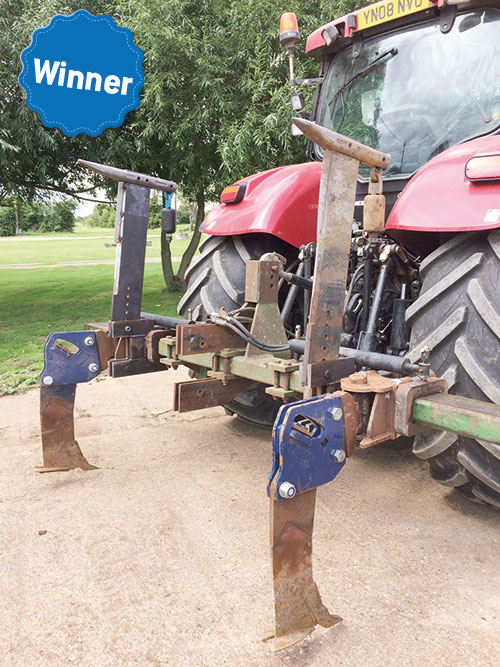
Blackgrass remains a burdensome pressure across large swathes of the UK’s arable land, and it has forced many farmers into the workshop in search of tools to limit its spread.
Rob Gash, from Cotham, Nottinghamshire, decided to make the switch to shallow cultivations with a TWB Eliminator, but the move meant he needed something that could rip up the combine and corn trailer wheelings post harvest.
His home-brewed compaction buster mounts to a Case Puma on a cultivator toolbar frame that was salvaged from the stinging nettles.
The two subsoiler legs have narrow wings to minimise soil heave and they can be slid in and out to lift different width wheelings from 2-3.8m.
The system can also be used for deep draining by flipping the mole legs down in place of the subsoiler feet.
Draft demands are lower than a mole sledge, says Mr Gash, because there are no skids to sap the tractor’s power, and it will comfortably drag two 4in bombs at a 19in depth.
Alistair McCrae’s grader
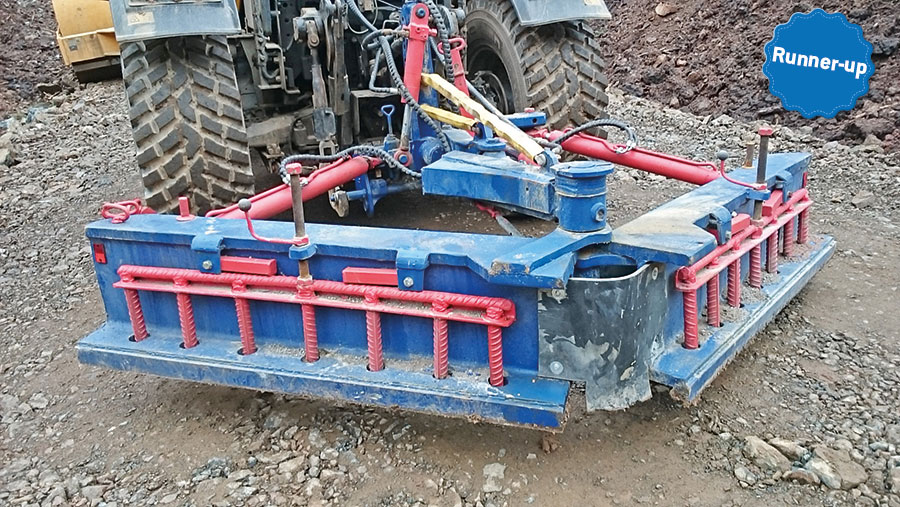
Argyll contractor Alistair McCrae rigged-up a smart-looking grader to level the tracks torn up by forestry trucks in the north-west of Scotland.
Cobbled together during weekends and evenings in the workshop, it cost just £300 in welding rods, hoses and 60mm ripping pins – the rest was made up of metal salvaged from the scrap bin.
Donor machines include an old Lemken plough, hydraulic rams from a crocked JCB 2CX, a centre pivot from digger bucket link bushes and a 60mm bucket pin.
The unit can be offset to keep the tractor clear of roadside ditches and it has a set of teeth that can be lowered via a winding handle to rip the road surface prior to grading.
See also: Six best-selling impact drivers on test
Pat Foster’s mobile air dryer
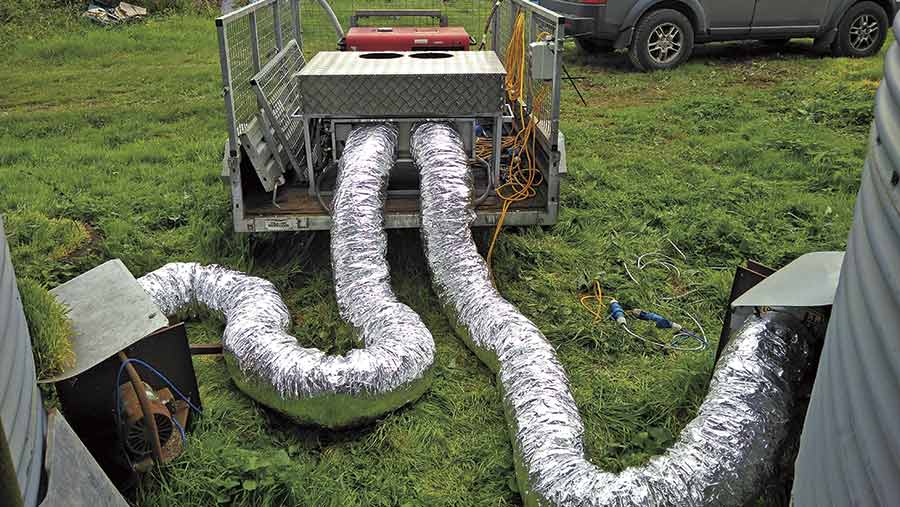
Norfolk farmer Andy Thaxton relies on two 50t Simplex grain bins on his 50ha farm, but they reside on a remote track away from the main farmyard.
With no electric on site, Mr Thaxton used a petrol-powered generator to power the fans to keep his grain cool before it’s outloaded every spring.
However, the generator became easy pickings for thieves and, after losing his third one, he turned to air-conditioning specialist Pat Foster who offered to build him a drying unit that would remove the moisture in the air before blowing it through the grain.
The system is made up of a refrigeration unit similar to the type you’d see on top of a supermarket delivery van. This draws the air in and, as it hits the spinning fans, the fins remove the moisture. This then drips away below the trailer, while the dry air is fired into the bins.
Power comes from a 240V supply on a generator that runs to a 2hp single-phase electric motor. It means Mr Thaxton can now unplug the two air ducts and cart the dryer and generator back home to store it safely behind lock and key.
The dryer unit cost about £1,500 to build and took under two days to put together, with the trailer and generator supplied separately.
David Sunnucks’s telehandler-mounted plastic compactor
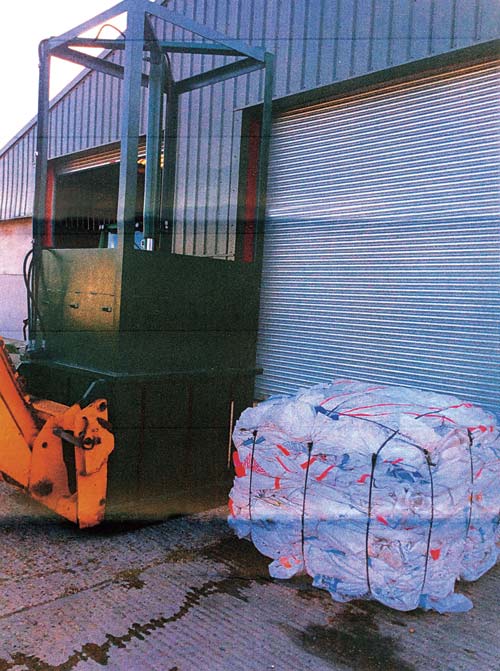
Essex arable farmer David Sunnucks was getting increasingly frustrated with the amount of plastic fertiliser bags and chemical cans he had to store under cover to prevent them being blown around the East Anglian countryside.
Not only that, when he came to do the recycling run with the loose plastic, the 16t trailer he used would only hold about 1t of material.
To solve the problem, he built a compactor system that hooks on the front of his JCB Loadall and is powered by its hydraulic third service. This operates a large ram, which compresses the material below it.
He can now ram more than 100 1t urea bags and multiple chemical cans into a bale, so a year’s worth of plastic from his 525ha arable farm can be transported to the recycling centre in one hit.
Andrew Hodge’s forklift scraper conversion

After treating his Manitou mast forklift to a new engine half way through its life, Andrew Hodge was keen to get his money back from the investment.
So, when the forklift mast gave up the ghost he decided to turn it into a scraper tractor instead.
The only cost was a set of link arms from a Ford 4000, which attached to the Manitou at the base of the mast and means it can run through the standard hydraulic controls.
Colin Sloss’s silage bale carrier
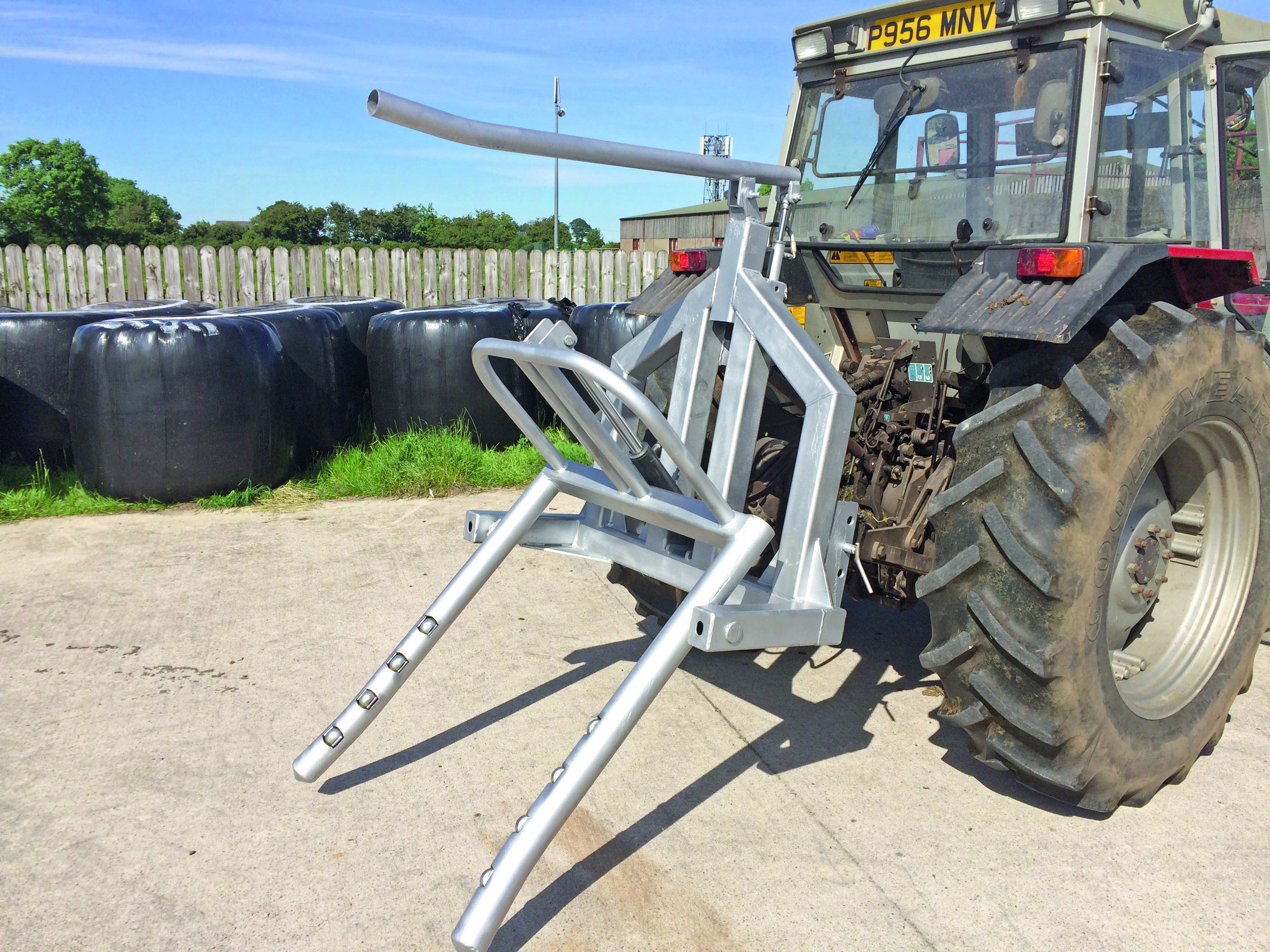
Sowing high-protein grass seeds is all well and good, but if you can’t get the bales back to base without piercing them then it’s a waste of time.
Having seen almost one-fifth of his bales damaged from a 6.9ha field, Colin Sloss from Dungannon, Northern Ireland, decided it was time to develop a machine that would treat the bales with a bit more care.
The tractor-mounted carrier has been almost four years in the making and uses four nylon-bushed rollers in each section of the tubular frame to minimise the risk of abrasive tears in the wrap.
The main frame is made from 100mm box-section steel that mounts on a regular three-point linkage. There are two double-acting spools – one for the tipping bed arms and another for the top safety clamp – that means the system can be run without the tractor’s back window open.
Total weight is about 200kg and Mr Sloss hopes to have the machine in production by early next year.
Andrew Metson’s front linkage toolbox
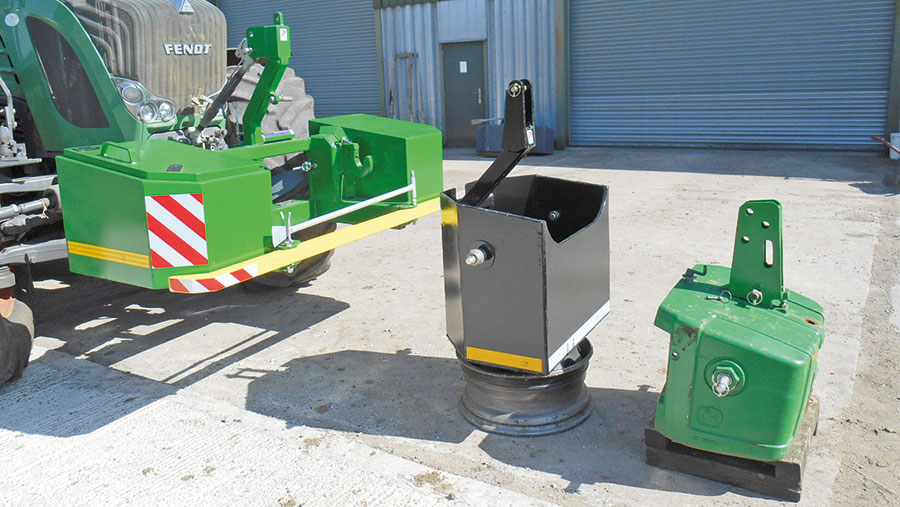
Essex tinkerer Andrew Metson, who scooped the top prize in 2011’s Farm Inventions competition, has been back in the workshop – this time to build a new front linkage toolbox for a Fendt 939.
He wanted the toolbox to be attached all year, but with the option of adding or removing weight depending on the job in hand.
The bright green box has two lockable compartments either side for tools and cultivator points, as well as a handy holder for a grease gun and cartridge.
The clever bit is in the centre of the box, where there are two quick-release linkage hooks mounted directly in line with the tractor’s front arms.
Provided the weight blocks are sat on a pallet, the tractor can scoop them up or drop them off in the normal manner.
They’re mounted further forwards than usual, which apparently improves the tractor’s weight balance and traction on heavy draft tasks.
Mr Metson has also constructed a steel storage box that fills the gap when the weights aren’t attached, and there’s a 300-litre supplementary diesel tank in the pipeline, too.
Alistair Brook’s tractor toolbox
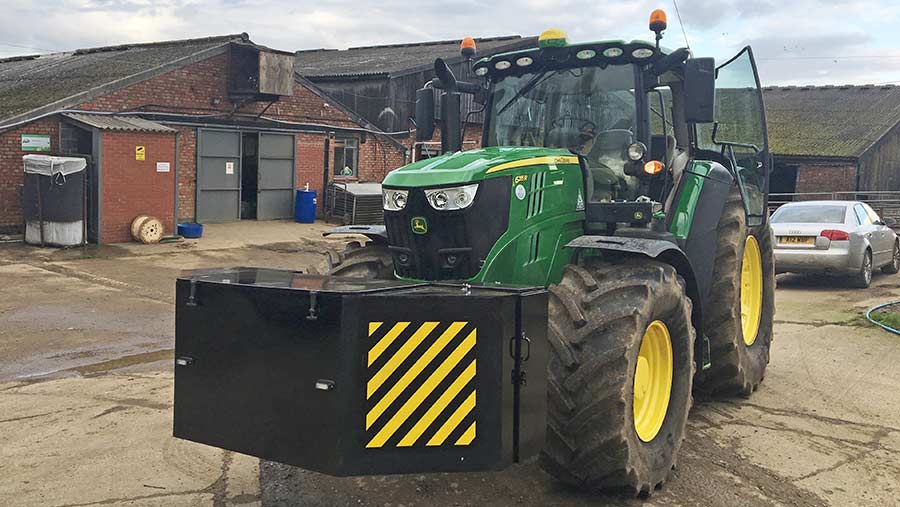
Seventeen-year-old Lincolnshire student Alistair Brook built this front-linkage-mounted toolbox as part of his A-level design and technology course.
His design incorporates a 6in fold-away vice, multiple sliding toolboxes and a large storage area in the centre for bulky items such as cultivator points.
The only part of the box that wasn’t built by Mr Brook was the recessed three-point-linkage headstock, which was pinched from an old subsoiler on the farm.
He started putting the project together at Caistor Grammar School in Lincolnshire, but due to its bulk he had to finish it off in the farm workshop. All in, it cost £700 to build.
Richard Gilman’s side-shift attachment
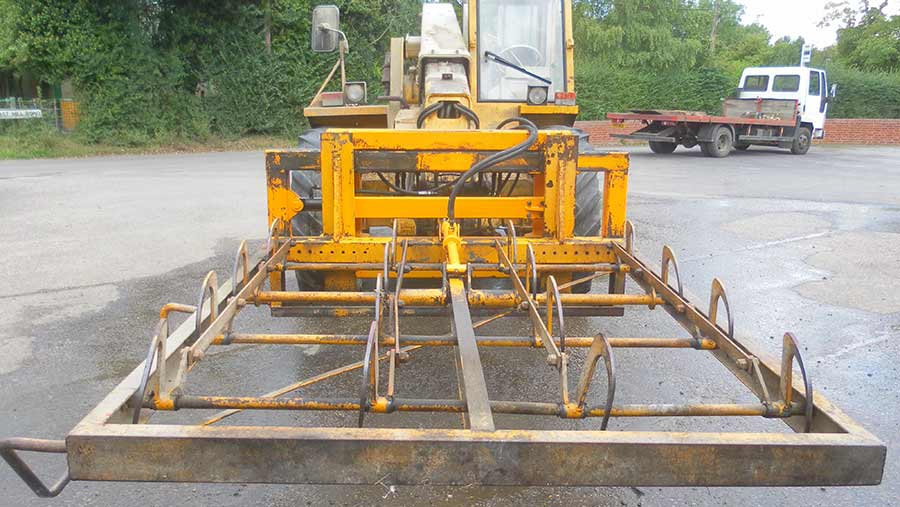
Kent farmer Richard Gilman built a side-shift attachment for his JCB Loadall to speed up the job of handling bales with a flat-eight grab.
The nifty add-on allows a sideways shunt of up to 300mm in either direction, which makes it much easier to get the bales square into the corners of buildings without scrubbing the telehandler’s tyres against shed walls.
The side-shift element consists of two main parts – a fixed frame constructed of 100mm box section that is attached to the Loadall via quick hitch brackets, and a sliding frame that hooks over the fixed section and is held by 25mm-thick lugs top and bottom.
Sideways power is provided by a hydraulic cylinder (found at the local scrappy from an old dustcart) and the sliding frame carries quick-hitch mountings to attach the grab.
Brian Hepple’s wool packing machine
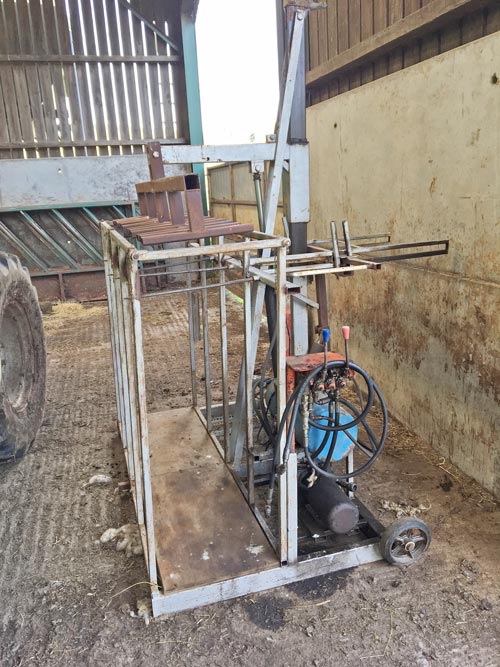
Brian Hepple built his own hydraulically powered wool packing machine from a simple oil-powered pump that is driven by an electric motor.
The machine compresses the wool and pins it in place, which has proved beneficial in cutting down haulage costs – the bags now weigh 105kg, well above the depot average of 90kg.
Gordon Stephen’s straw conditioner
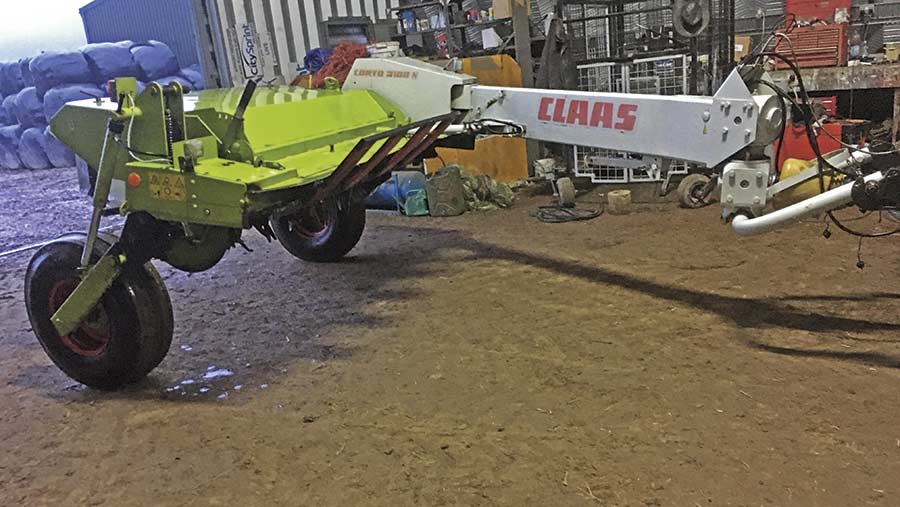
After baulking at the cost of new straw conditioners, Aberdeenshire farmer Gordon Stephen decided to build his own.
Starting out with an old Claas Corto 3100 mower conditioner, he removed the drums leaving just the flail conditioner in place to do the conditioning job.
Other modifications included fitting deflector plates to prevent it blocking and modifying the rear hood.

